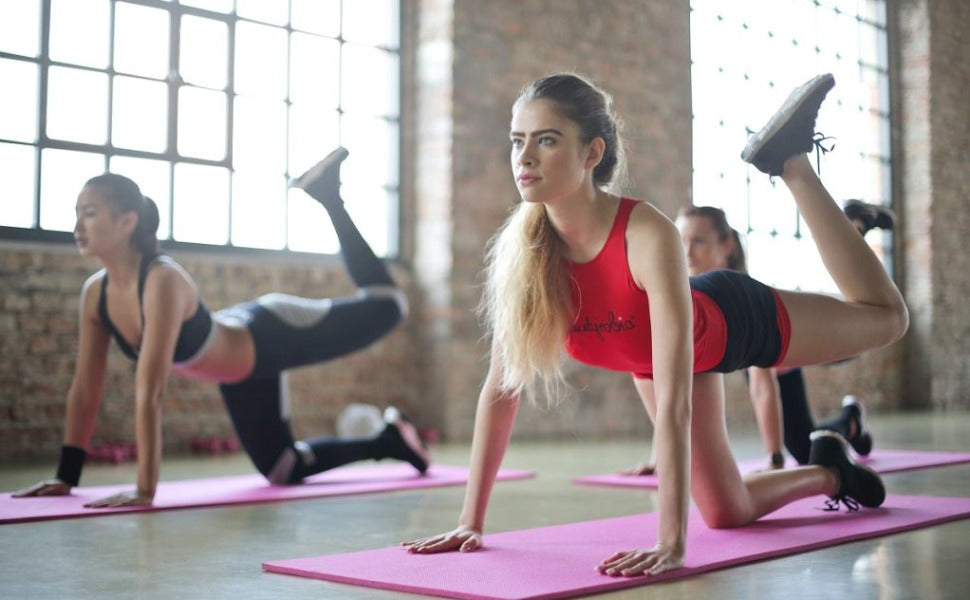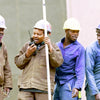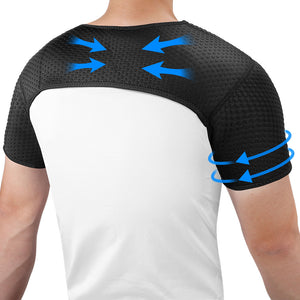Do Best Back Brace Really Work

super efficient in terms of short-term pain relief, , and offering support. However, they also offer the possibility for long-term dependency on them, which translates to the loss of muscle strength. They are, therefore, to be used in addition to the back exercises to achieve maximum effect, not overusing the brace itself and being cognizant of wear time and how tightly they should be worn.
Back Support
Back braces are practical devices that have been designed in a way that provides support to the spine, the lower back, and the musculature that is attached to it to alleviate pressure from poor posture or abnormal load applied for an extended period of time. The spine essentially consists of vertebrae and intervertebral discs, together housing the spinal cord, and forms a major component in the trunk. Under normal conditions, the spine should have certain natural curvatures to align and balance it. These curves, however, might be modified due to long sitting, lack of exercises, and excessive strain that can lead to damage to muscles, ligaments, joints, and other structures involved.
Generally, are made with combined elastic materials, nylon straps with adjustable bands, reflecting as naturally as possible the proper curvature of the spine for the needed support. By providing external support, back braces maintain the proper natural curve of the spine and lower back, relieving the burden poor posture can cause. Contemporary back braces are made to avoid discomfort and the problem of localized heat during wear, normally by using flexible materials or mesh fabrics, unlike the rigid ones from more traditional braces.
These can help decrease lumbar lordosis or kyphosis resulting from long periods of poor sitting or standing posture. Since the tension of such a brace is adjustable, wearers can get that extra support for the spine and lower back without hindrance in daily activities. It dramatically improves sitting comfort, reducing pain caused by lower back fatigue among people who have to sit for long periods, like office workers or drivers.
However, back braces cannot replace long-term training of the back muscles and have their own shortcomings to affect the performance, such as wear time, how to use it, and an individual's posture. Wearing a back brace with proper tightness and time will enhance the supporting effect; too much reliance might lead to body dependence and reduction in back muscle training.
Pain Relief
Another important function that back braces perform is in , specifically pain derived from incorrect posture, overloading, and even too much muscle fatigue. Generally, back and lower back pain derives from a combination of elements that includes strained muscles, herniated discs, and degeneration of the spinal components. Depending on the nature of the pain, back braces help lessen discomfort through offering support from the exterior and limiting unnecessary movements.
The back brace could be used as a "decompression" tool for muscle-strain-type back pain. In cases of muscle strain, the brace reduces the burden on the muscles themselves so that they are not overly stretched; it helps to lower the tension in and pain of the muscles. Simultaneously, the orthesis promotes local blood circulation, improving the oxygen supply of muscles, relieving pain, and thereby contributing to recovery.
In the case of degenerative spinal diseases, like spinal arthritis or herniated discs, back braces act to provide stability by limiting excessive movements of the spine and intervertebral discs and reduce pressure and friction. Since only limited and hence controlled excessive bending and twisting motions are possible, a back brace relieves extreme pains caused by these conditions. Moreover, a back brace can align the lower back and spine correctly, avoiding improper posture further compressing the intervertebral discs and thus relieve pain.
The analgesic effect of the back brace itself is generally temporary and cannot cure the basic condition. In the case of persistent or intensifying pain, use of a back brace as an adjunct to other treatments, including medication or physical therapy.

Proper Fit
It is important to consider the fitting of the back brace because design and effectiveness would depend on that. The fit tends to have a direct impact on the support and comfort it yields, with the correct fit ensuring that the brace supports the spine while causing no discomforts or health risks. When buying a back brace, one needs to consider an individual's body type, waist size, and shoulder width to be able to determine its size and tightness.
The normal back brace normally has an that enables the users to adjust the tightness according to one's needs for the best support. More particularly, both the lower back and chest are designed in curves or with elasticity to best fit the body. Good-quality back braces are made using soft materials, such as elastic fabrics or nylon, which can fit different body types and allow comfort for prolonged wear.
The tightness of the back brace should be moderate, it needs to support without too much compression. A too tight one may lead to poor circulation and thus discomfort or numbness; on the other hand, a very loose one won't offer the necessary support and is therefore useless for alleviating any fatigue or discomfort in the back.
When choosing a back brace, it's all about finding one that best suits your needs. Whether it's for minor discomfort because of poor sitting posture, look for something that would give moderate support and also be comfortable to wear for extended periods. And when the pain is far more severe—as it may well be in cases of certain sporting injuries or joint conditions—the time would have come to get a heavier-duty brace that can limit excessive movement of the spine or joints.
Posture Fix
Back braces . Most of those who have sedentary jobs, such as office work or driving, often develop poor posture habits where they slouch, slump, or lean forward. These poor postures alter the natural curve of the spine, which can eventually result in chronic back and lower back pains, stiffness, and other problems. Back braces provide the needed external support that helps restore the spine's natural curvature and correct poor posture.
In instances of spinal kyphosis or forward lean, the back supports the spine and shoulders while maintaining proper sitting or standing postures. The design of the back brace, thus, shall provide strength for the lower back area and support the chest area, reducing the tendency of slouching or hunching forward to maintain more natural and comfortable posture. Wearing a back brace makes the alignment of the spine easier to maintain, thereby preventing poor posture that could be sustained for too long.
However, one will not achieve full correction in posture through back braces alone but rather through improvement, which in the longer run requires instilling good sitting, standing, and walking habits and appropriate exercises to strengthen muscles of the back. While back braces serve as an aid, lasting posture improvement requires self-regulation and training in daily life.
Muscle Strength
Although the back braces are extremely effective in regard to temporary support and relief of the back muscles from fatigue due to poor posture or excess load, their application over a longer period might weaken the strength of the back muscles and be detrimental to the entire physical stability and locomotion. The main role of a back brace is to offer external support to the spine and the lower back to remain in the correct position and reduce any damage due to poor posture or external forces. It does not, however, directly strengthen the back muscles and may even lead to the back muscles becoming "lazy."
on a back brace may lead to the dependency of muscles in the spine and lower back on support given by the brace instead of relying on their strength themselves to maintain stability in the spine. This may turn the core muscles, deep lumbar muscles, and erector spinae into weaker ones regarding strength and endurance, thus leading to muscle atrophy. When these muscles are unable to provide adequate support, the spine, joints, and ligaments may bear additional stress, reducing flexibility and mobility. It can therefore affect not only athletic performance but also everyday comfort.
It is advisable to combine the use of a back brace with active training of the back and core muscles to get rid of this "brace dependency." Strengthened back muscles will allow the spine to maintain stability without any external support, thus enhancing the body's capability of self-regulation and reducing the risk of back problems. Core training is important to strengthen the back muscles. Such exercises as back stretches, squats, deadlifts, and planks work quite effectively in increasing strength and endurance of the back. Especially relevant is a proper training program of deep back and abdominal muscles, as it allows for improvement in spinal stability, supporting capabilities, and overall motion control. For example, deadlifts do not just develop back muscles but also improve coordination between hips and legs, increasing general spinal stability and diminishing injuries of the back.
Injury Prevention
Back braces play a crucial role in defending the body from injury in specific activities and sudden accidents. Those who engage in , extreme exercise, or even lift heavy weights quite often are aided by a back brace to take some pressure off the back and prevent needless injury. The spine supports the upper portion of the body and is prone to extreme pressure when doing various activities. Such actions expose one to over-rotation and compression, which may result in soft tissue injury, ligament sprains, and even herniated disks.
Back braces prevent such kinds of injuries by limiting extreme bends and twists, by offering stable support and reducing strain on the spine. They reduce extreme bending of the spine especially when one bends over while lifting weights. The brace protects the lumbar spine and intervertebral discs by reducing the possibility of higher pressure on them, hence reducing the possibility of injury. A back brace can also help distribute the forces of an impact so that the intervertebral discs have less stress hence preventing their possible damage.
Back braces are also very important in preventing further injury in individuals with various problems in their backs. For instance, back braces could minimize loading of the spine, stabilize the spine, and prevent secondary injuries from improper movements in conditions like herniated discs and scoliosis. This is, of course, related to how the structure of the back brace has been designed to inhibit certain movements, such as forward bending, arching, or excess rotation, protecting the condition from aggravation due to poor posture or intense activities. Patients with mild problems of the spine will be protected through a back brace in their daily activities while recovering and not their symptoms aggravated due to overexertion.

Short-Term Help
Back braces actually serve their purpose of , at least for a while. So, back pain will now be temporary, especially when embarking on long travel, after standing for quite some time, carrying heavy weights, or even during sudden cases of back pull during work. Right there and then, back braces will be able to give the needed support during those instances, allowing users to be free from pain and get back to normal life in no time. The structure of the back brace itself enables it to give immediate support sans hindrance to daily activities.
During long-distance flying or a very long drive, the seating is not so accommodating, and one would get uncomfortably, even painfully, stiff in the back. A back brace would take some pressure off the lumbar spine and take some of that compression—which, in turn, supports it, helping to prevent muscle tension and soreness during long periods of sitting. Additionally, after heavy lifts, support structures at the back reduce sudden force compression that may occur with the spine, hence alleviating discomfort or pain during the recovery process.
Relief that back braces can offer is short-term only. They cannot eliminate the very cause of the problem of back pain. In this case, where the dependency on back braces is long-term, the back muscles may get weaker, inviting more injuries in times to come. Hence, the back braces are supplementary means for temporary pain and discomfort relief, together with physical therapy and training the back to tackle the problem itself.














